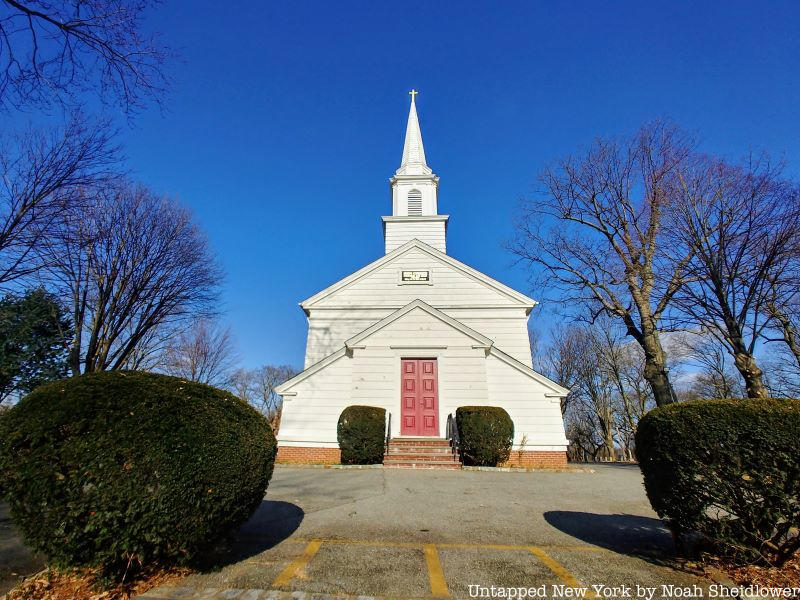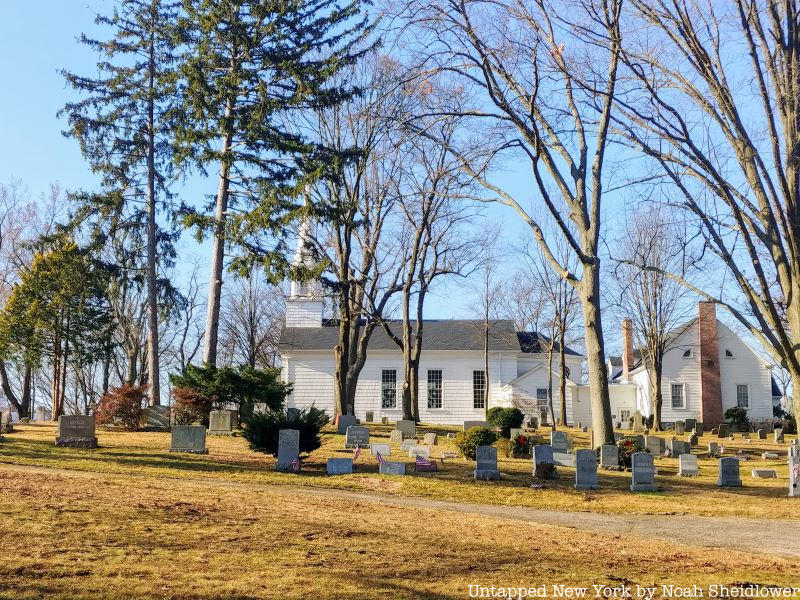4. The founder of a Douglaston church owned perhaps the last slave in New York state

Zion Episcopal Church, which is elevated from Northern Boulevard, was founded in 1830, predating nearly every building still standing in Douglaston. It was founded by merchant and alderman Wynant Van Zandt. Van Zandt ran a 120-acre farm on Little Neck Bay starting in 1813 after his tenure at Manhattan’s Trinity Church. Zion Episcopal Church was built somewhat out of necessity; the Van Zandt family hiked over five miles every Sunday to Christ Church in Manhasset. With 17 of his neighbors (and significant personal contributions), he crowdfunded enough funds to construct the church, laying the cornerstone in 1829. Van Zandt only worshipped at the church for a year before passing away, and he was buried in a family vault behind the church.
The church had no raised altar nor a middle aisle for the pews, but it was stable and brought comfort (and convenience) to the Douglaston community, which began growing in the 1870s. The population grew after the Flushing and North Side Railroad linked the neighborhood with the rest of the city. A new Parish House was erected in 1896, though in 1924, a massive fire destroyed the historic building. A new church was built in the Colonial style by 1927, but a second fire in 1929 destroyed a handful of rooms.

Before the church was erected, the Van Zandt family relied on the labor of slaves, as did many wealthy families in New York. However, while many freed their slaves in the late 1700s, the family kept a woman named Margaret Pine until 1813. Pine, whose resting place is at Green-Wood Cemetery, was born in Westchester in 1778 to parents enslaved by Israel Underhill. In 1806 at age 28, Pine became the property of Underhill’s daughter Maria Van Zandt, and for the next seven years, she was a nurse for the Van Zandt family’s 11 sons. Wynant Van Zandt issued her manumission (or her release from slavery) in 1813. Described as “sober, honest, and faithful” but “averse to living in the country,” Pine was granted permission to live in New York City.
However, a Brooklyn Star article honoring her death noted that she refused to be manumitted: “She told her master, when he proposed to do so, that he had her services for the best part of her life, and that she wished him to take care of her as long as she lived, and he willingly consented.” Therefore, she technically was still enslaved when she died in 1857, living “like a sincere Christian, and died like one, cheerful, and without a struggle, to the last.” This would make her the last slave of New York State, according to Green-Wood Cemetery. She spent most of her “free” life in Manhattan, settling down at 72 Thompson Street on a block with neighbors mostly of African American descent.





